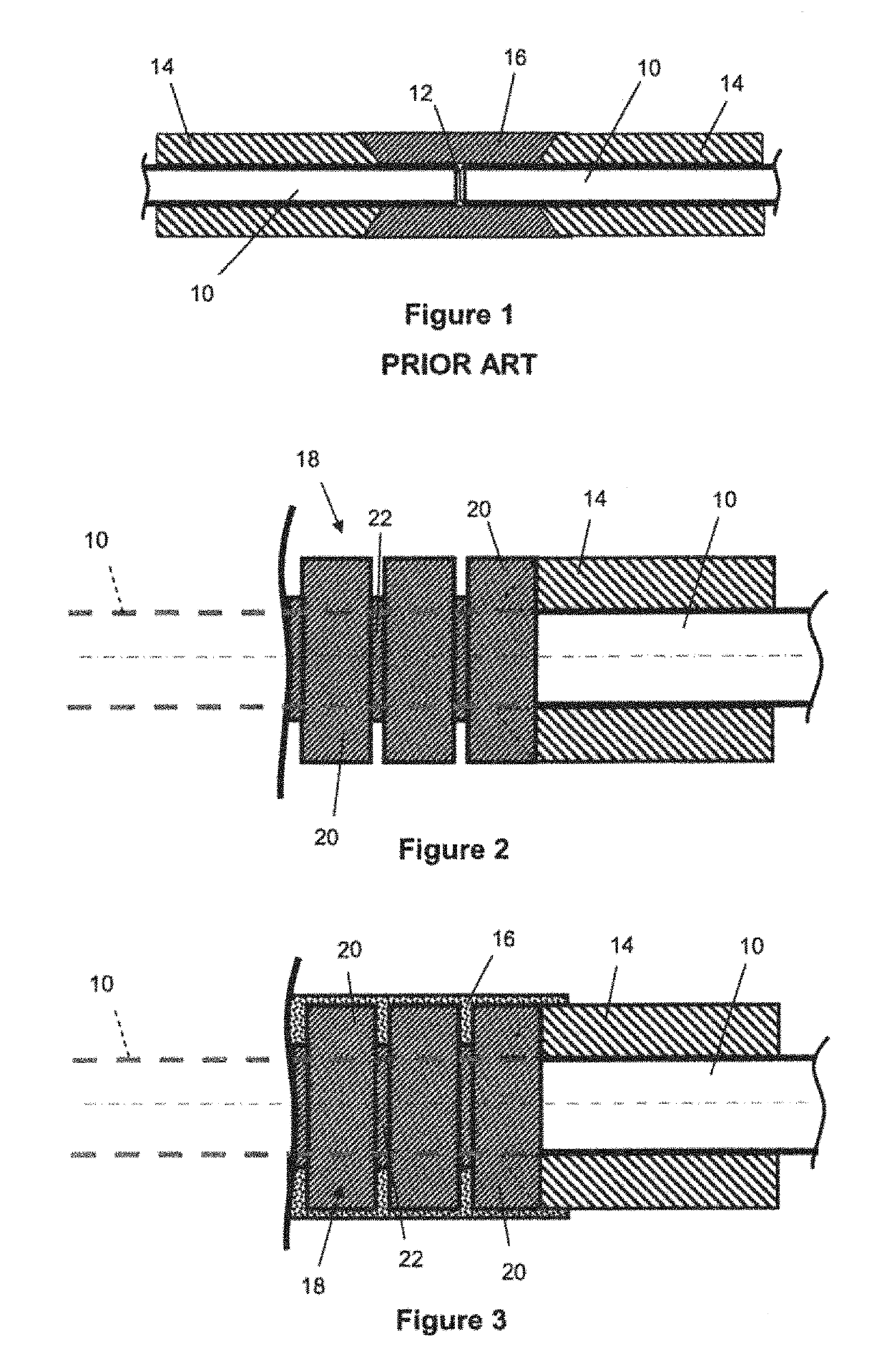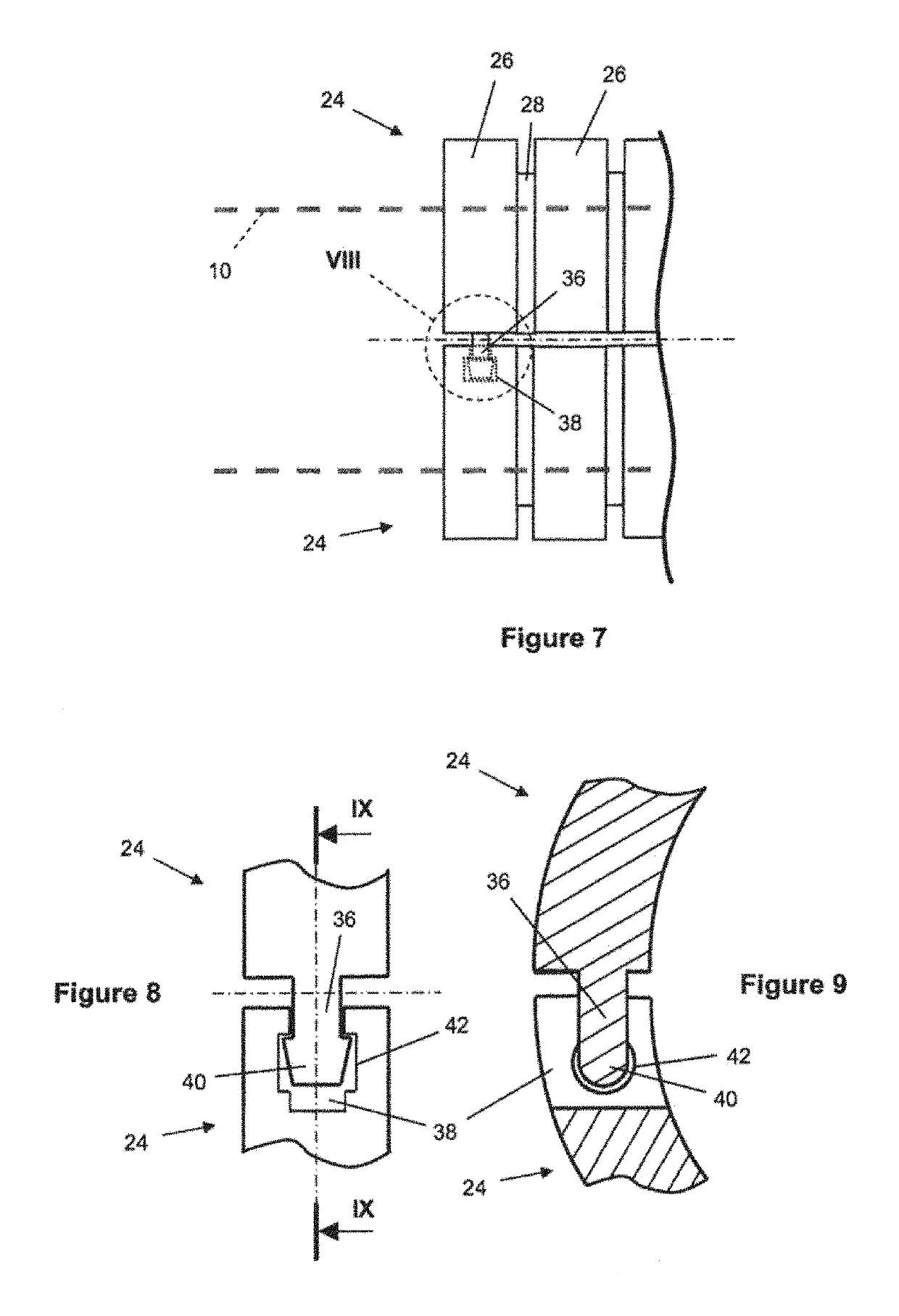Techniques for coating pipes
a technology of coating pipes and pipes, applied in the direction of insulation, mechanical equipment, borehole/well accessories, etc., can solve the problems of pipe not being regarded in the industry as being ‘flexible’, irreversible damage to the structure, and steel plastic deformation
- Summary
- Abstract
- Description
- Claims
- Application Information
AI Technical Summary
Benefits of technology
Problems solved by technology
Method used
Image
Examples
Embodiment Construction
[0091]In the prior art arrangement shown in FIG. 1, a field joint is created between abutting pipe joints 10 of a pipeline, where a circumferential butt weld 12 attaches the pipe joints 10 to each other end-to-end. Each pipe joint 10 is coated with an insulating parent coating 14, for example a 5LPP coating, that terminates short of the facing end of each pipe joint 10 with a typically chamfered end shape. An annular gap lies between the opposed chamfered ends of the parent coatings 14 around the weld 12, where the exposed external surfaces of the pipe joints 10 are coated with an insulating field joint coating 16 that substantially matches the radial thickness of the parent coatings 14.
[0092]In this description, references to the radial direction are defined with respect to the central longitudinal axis of a pipe joint 10, which is also the centre of curvature of the pipe joints 10, the coatings 14, 16 and other tubular or part-tubular features.
[0093]As acknowledged in the introduc...
PUM
 Login to View More
Login to View More Abstract
Description
Claims
Application Information
 Login to View More
Login to View More - R&D
- Intellectual Property
- Life Sciences
- Materials
- Tech Scout
- Unparalleled Data Quality
- Higher Quality Content
- 60% Fewer Hallucinations
Browse by: Latest US Patents, China's latest patents, Technical Efficacy Thesaurus, Application Domain, Technology Topic, Popular Technical Reports.
© 2025 PatSnap. All rights reserved.Legal|Privacy policy|Modern Slavery Act Transparency Statement|Sitemap|About US| Contact US: help@patsnap.com



